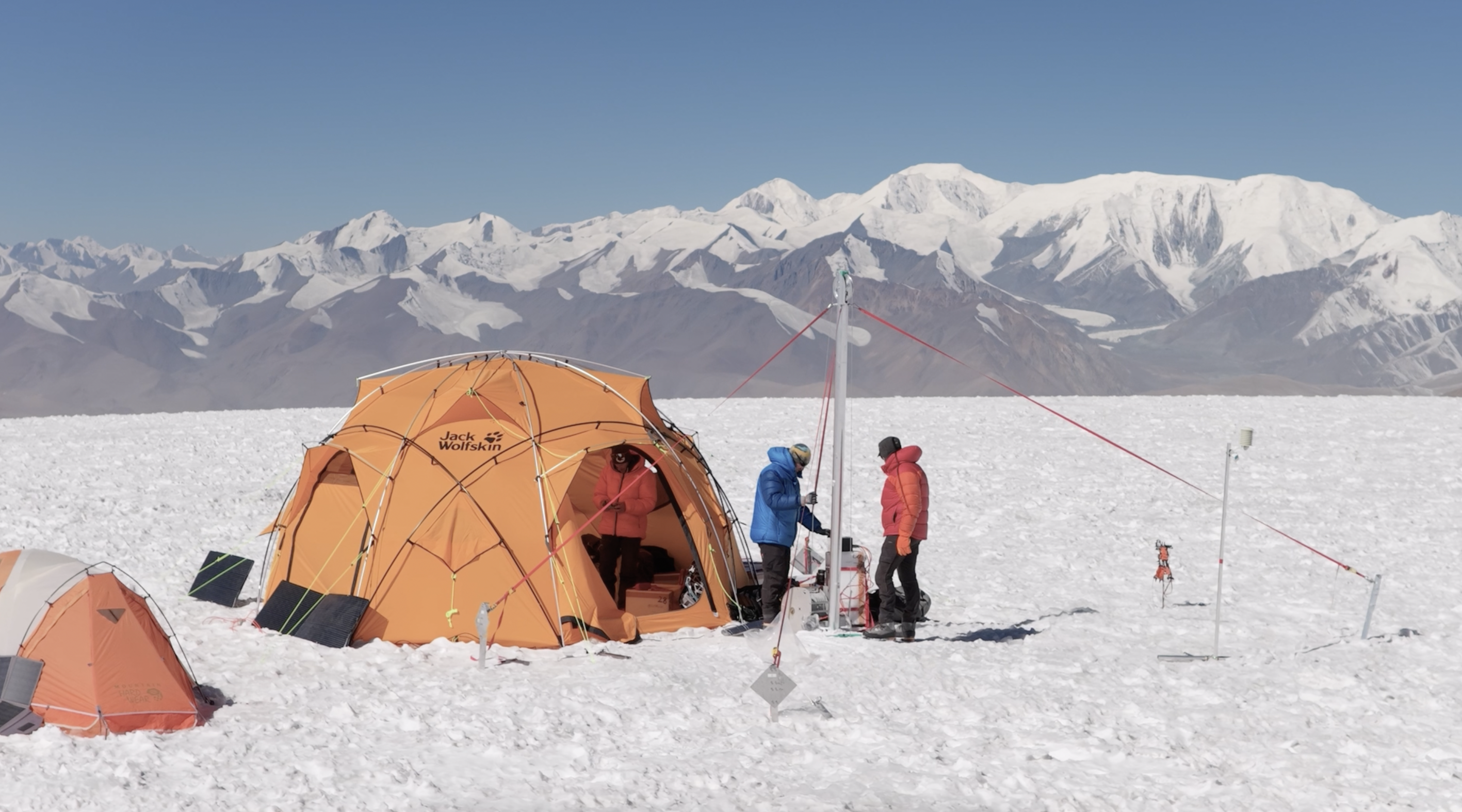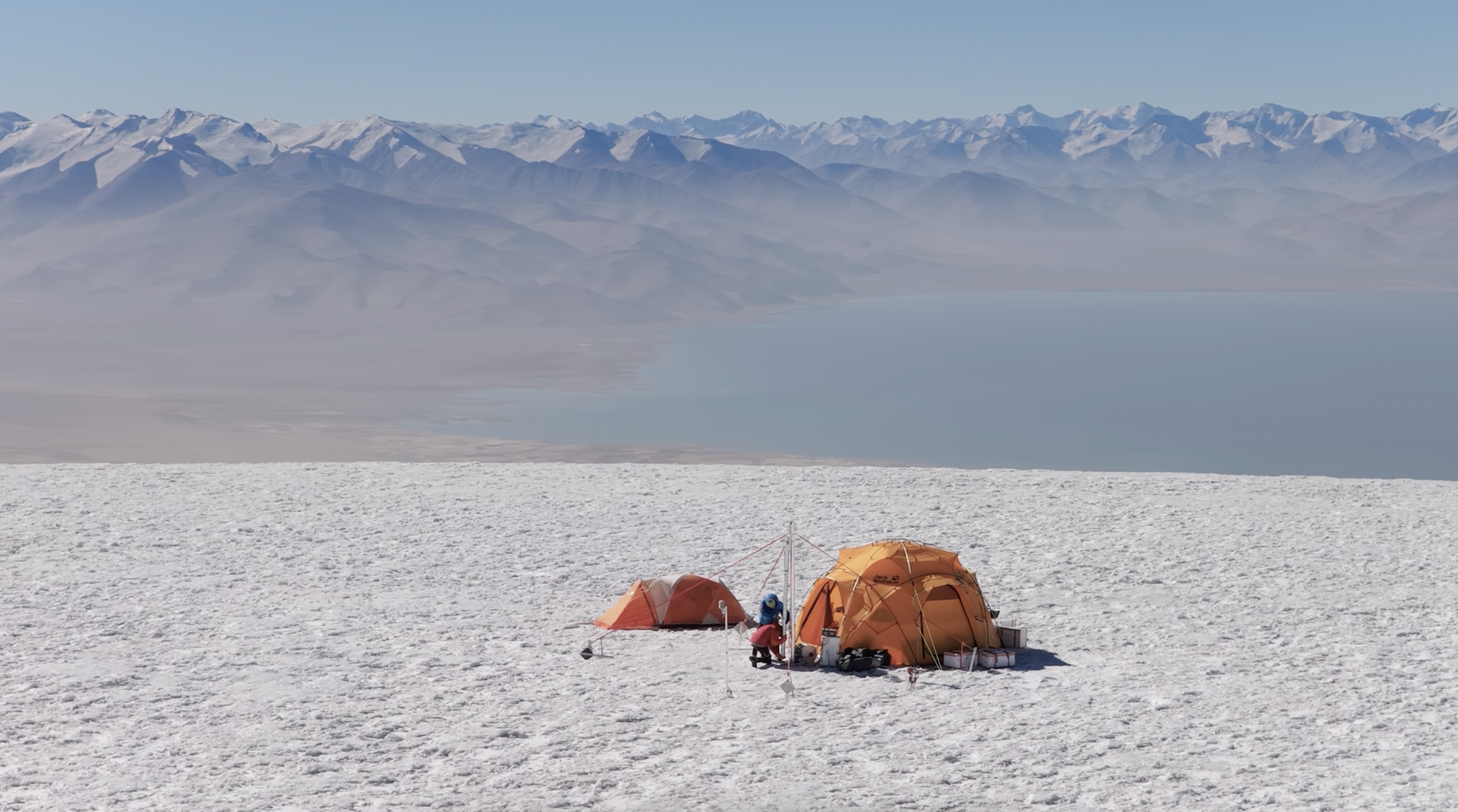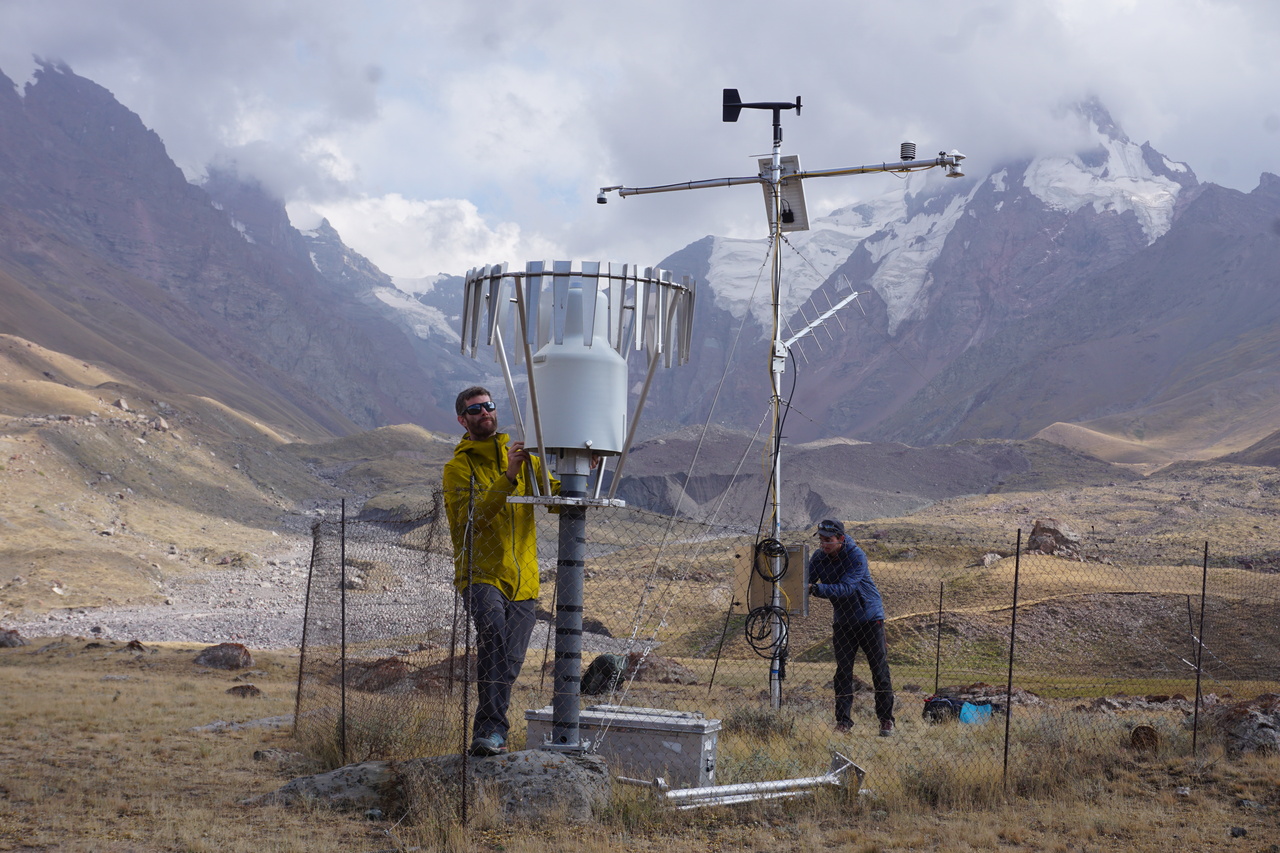SPI Flagship Initiative “PAMIR” to contribute to the Ice Memory Foundation climate archive with deep ice core from the Pamir region
The Climate and Environmental History Research Cluster of the PAMIR research programme has launched their field campaign on the Kon Chukurbashi Ice Cap in the Pamir Mountains (Tajikistan) with the aim to extract two deep ice cores. One ice core will be used for research purposes and the second will be preserved for future generations thanks to Ice Memory Foundation.
The Climate and Environmental History Research Cluster of the PAMIR programme is led by the University of Fribourg (UniFr) in Switzerland in partnership with the Center for Glacier Research of the National Academy of Sciences of Tajikistan. Since the beginning of the PAMIR project in 2022, in collaboration with researchers from Paul Scherrer Institute and the Bavarian Academy of Sciences, the team investigated several sites in the Pamir region and, in 2024, identified the Kon Chukurbashi Ice Cap, located at over 5800 m a.s.l., as a suitable site for ice core extraction.
In September 2025, the Swiss-Tajik team has launched a joint expedition with scientists from Nagoya and Hokkaido Universities (Japan) and the Ohio State University (US) to conduct an ice coring operation and to retrieve the first-ever deep ice cores from this area. This operation is an integral part of the PAMIR programme that aims to unravel novel data to test the competing hypotheses on the unique state of the cryosphere in this important yet understudied mountain range, a vulnerable water tower that supports the livelihoods of millions of people in Central Asia. The ice is also a climate archive documenting air pollution and early human impact, e.g. from mining activities.

“This ice holds hundreds and possibly even thousands of years of physical records of snowfall, temperature, dust, and atmospheric chemistry. These data will be vital to understand the current and historic climatic changes in the region, and to help us to understand how future climate change will affect the region’s snow and ice.”
– Dr Evan Miles (UZH, UniFr, WSL)

The science team aims to retrieve two 100-metre-long ice cores during the field campaign. One will be analysed in a specialised laboratory at the Institute for Low Temperature Science at Hokkaido University in Japan, and the second core will join the Ice Memory Foundation’s sanctuary of climate archives in Antarctica. Financed by Swiss Polar Institute’s Flagship Initiative programme, this drilling operation also benefits from key technical support from the University of Bern. The extraction of the second core and its transport to Antarctica is organised thanks to the support of the Ice Memory Foundation who will preserve this climate archive of the Pamir region for future generations, a fitting symbol of the UN International Year of Glacier Preservation 2025 and a start to the Decade of Action for Cryospheric Sciences 2025-2034.

